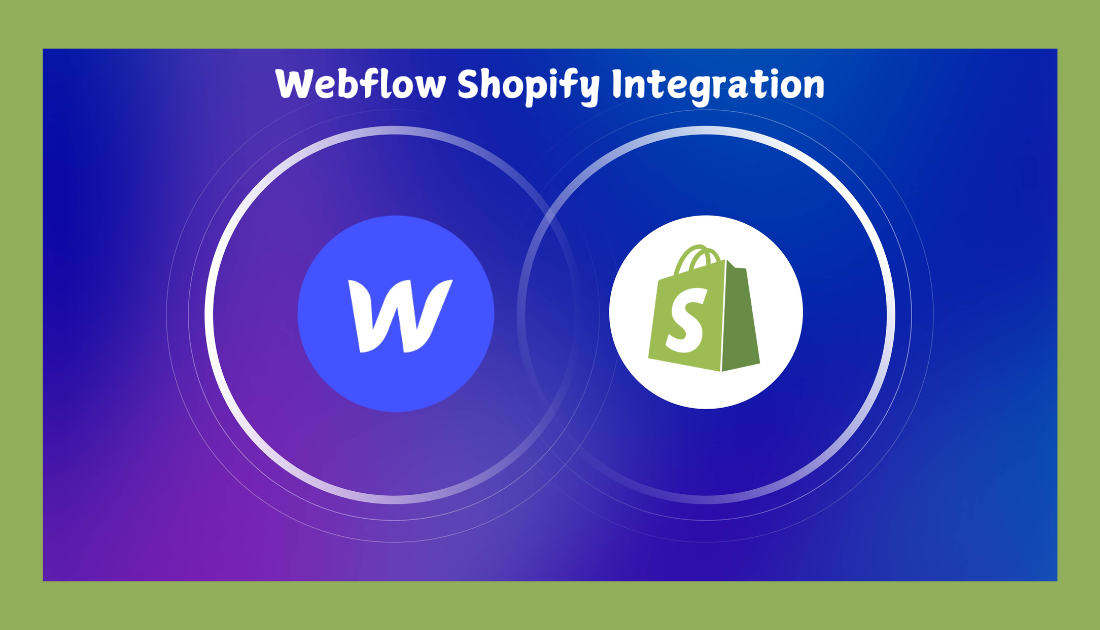
Webflow and Shopify offer easy integration of e-commerce stores for quick management and better user experience. Once you integrate the Webflow website with Shopify, you can quickly add, edit, and remove products to maintain the product list and catalog and reduce the cart abandon rate. For this, you must know the steps to Webflow Shopify integration.
The integration process of the Shopify store with the Webflow website starts with signing up for the Shopify account and creating a collection list on your Webflow website. Then, you can add the Shopify products to Webflow and replace the existing product IDs with your unique ones for the store.
As you follow our guidelines for quick integration of Webflow with Shopify, you can use the features of both platforms. It will create a dynamic and one-of-a-kind shopping experience for the visitors. Also, you will enjoy the versatile and beneficial functions of Shopify for e-commerce stores, along with the no-code facility of Webflow. So, let's check out the steps to integrate these two powerful platforms to boost your business.
Webflow Shopify Integration (A Step-by-Step Guide)

Do you want to take your online store global? Do you want to maintain your shop without the hassles of coding and plugins? If so, it’s time you integrate both Shopify and Webflow for an amazing experience.
Step 1: Create your Shopify Account
First, visit Shopify and create a Shopify account. For this, click on the "Start Free Trial" button to follow the on-screen instructions. Once you click on the "Start Free Trial" button, you will be taken to the steps to sign up for Shopify.
There, you will get the following two options:
- I'm just starting
- I’m already selling online or in person
Once you choose one, you will get different options for your business type and products. There, choose the one that best fits your business model, as shown in the image below.
Finally, you will reach the page that says, “What do you plan to sell first?" There, select the products that you wish to sell on the Shopify store.
You will get six different options, such as services, digital products, etc., as shown in the image below. So, choose the one that aligns with your products. After that, choose the country from where you will operate the e-commerce business. It's crucial to set up your Shopify store.
Then, you will need to provide the email that you will use to log in to and operate the Shopify store. Finally, complete your two-step authentication to complete the Shopify sign-up process. Then, you can login to your Shopify account using the credentials such as password and email.
Step 2: Creating Webflow Collection
When you use Shopify with the Webflow website, you need to store and arrange your products. For this, you must create a collection so that you can arrange the products under these collection lists. You will need product components and unique product IDs to create the collection. The product component can be arranged in different sectors. It includes:
- Name: Each of your Shopify products must have a unique product name
- Price: Ensure that the product must have proper pricing with it
- Brief Description: The brief description highlights the short product description within 40 to 50 words. When a client visits your website, they will immediately see this description to know about it.
- Long Description: The long description will include the main features, benefits, and usefulness of the product. It will give the customers a proper idea about the product. It should include a proper description of all the features. You can use keywords and bullet points to influence customers here.
- Image: Ensure that each product has an engaging and attractive image to allure customers. The thumbnail image will go a long way to attract potential customers.
- Product Component: Next up, in the product component list, include the detailed benefits and components of the listed product.
- Product ID: Each product must have a unique ID so that you can use it to identify the product. The ID will make it easier for you to manage the product lists efficiently.
Step 3: Adding products to Webflow collection and mix
You will need product components and IDs to add them to the Webflow collection and mix segment. For this, click on your Shopify dashboard on the left side of your screen. There, you will set different menu bars. Navigate to the bottom to find the "Buy Buttons"
From the buy button, choose the product for which you wish to generate the product code. There, click on the “Generate Code” option. You will see a box popping up on your screen with the embedded code for the product list. You can then copy the embedded code.
After copying the embedded code for your Shopify product, go to your codes on the webpage. There, find the product component and ID as shown in the image. You need to copy these codes for product ID and collections.
Step 4: Adding embedded component to Webflow collection
You can also create dynamic embeds on your Webflow website for Shopify stores. It makes your product management easier and faster. However, for this, you will need a collection list and a collection page. They will hold the embedded codes.
For this, go to HTML embeds from the component list of your Webflow website for the Shopify store. You must create and design the Webflow component list following "Step 2" for this process. The embedded component will be right where you want to show the "Buy Button" option. Ensure it is in a convenient place so customers can click on the buy button section with ease.
Step 5: Copy and paste the embedded code
Once you have created the embedded component section for the buy button, go back to step 3 to copy the product ID and component. When you copy the code, go to the "Product Component" section and paste the code in the relevant section.
Also, you should replace the existing product ID and components with unique ones for your store. It is crucial for store management.
- First, click on the product component and ID to highlight them and see their values.
- Look at the top right side of your screen to find and click on the “+Add Fields” section.
- Then, you can replace the existing codes with the unique and new ones.
As you follow these steps, you will successfully integrate Webflow with Shopify to take your business global.
Why Should You Integrate Webflow And Shopify?

Shopify and Webflow are two of the most powerful platforms for businesses worldwide. You can integrate them to enjoy design freedoms and easy store management and boost customer experience. It will ensure better ROI.
Design Freedom Meets E-commerce Power:
Webflow and Shopify integration give you unparalleled design freedom without coding. So, you can create visually stunning websites without any coding hassle to enjoy the nitty-gritty of online selling. As you combine both, you will get a beautifully designed website. Then, you can incorporate it seamlessly with the products and features of Shopify.
Responsive and Customizable:
Webflow offers intuitive templates, design tools, and quick customizations. So, you can confidently customize your product listings, shopping cart, and checkout process with Webflow. It will match your brand's unique style within both platforms.
The customization ensures that your online store provides a user-friendly shopping experience. It will reduce card abandon rates and boost conversions.
Improved SEO and Page Speed:
Webflow is highly SEO-friendly. Also, its no-coding design ensures lightning-fast page loading times. So, when you merge it with Shopify, you will get better loading speed and easy SEO facilities. It improves the chance of higher ranks on SERP and brings more organic traffic.
Streamlined Content Management:
Thanks to the Content Management System (CMS) of Webflow, you can manage your Shopify store much better with it. You can effortlessly update product descriptions, images, and other elements directly using the CMS function. Hence, you can maintain a consistent brand image across your Shopify store faster and better.
Enhanced Customer Experience:
Integrating Webflow with Shopify improves the customer experience. Webflow has a clean and modern design. It will, thus, make your website user-friendly and visually appealing. With Shopify's robust e-commerce features, you can offer secure payment options, track orders, and provide excellent customer support. So, the integration will provide customers with an excellent experience.
Conclusion
Webflow and Shopify integration will boost your conversion, ROI, and sales. The integration process is slightly complex, but you can follow our step-by-step guidelines on Webflow Shopify integration.
It will take a few minutes, which is worth investing to make your website look better with easier management. The key is to create the collection list, retrieve the product ID, and use it with new ones.

About Flowzai
At Flowzai we craft beautiful, modern and easy to use Webflow templates & UI Kits.
Got A Project In Mind?
Reach out today, and let's make something amazing together.


